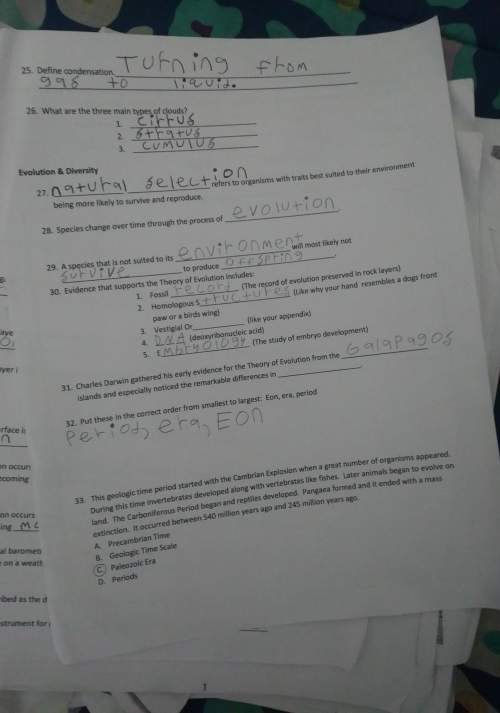
Answers: 1


Another question on Physics

Physics, 22.06.2019 18:30
Aprotein molecule in an electrophoresis gel has a negative charge. the exact charge depends on the ph of the solution, but 30 excess electrons is typical. what is the magnitude of the electric force on a protein with this charge in a 1600n/c electric field? write in two significant numbers, and also in newton
Answers: 2

Physics, 22.06.2019 19:10
3. a worker pushes a 30.5 kg polished stone along a polished table with a force on bonin a straight line for 5.20 s after starting from rest. there is no friction between thestone and the table. at the end of the table. the stone is hooked to a cable with a lengthof 62.0 cm to rotate it to a rough table to store until they can be picked up. the roughtable has a coefficient of static friction 0.702 with the polished stone. remember that 8= 9.80 m/s2a) what is the speed of the stone when it is hooked to the cable? b) what is the tension in the cable while the stone is rotating? (there is still nofriction)c) how much force is needed to make the stone begin sliding from rest on therough table? ius = 0.70262.0 cm30.5 kg20.5 kg6= 0
Answers: 2

Physics, 22.06.2019 19:30
Select light for the type of wave, adjust the wavelength so that the light is red, and increase the amplitude of the light to the max. then, select the start button at the source location to begin producing the waves. light is a form of electromagnetic wave, containing oscillating electric and magnetic fields. the wave amplitude detector mentioned above shows how the electric field oscillates in time at the location of the probe. the amplitude of the wave at the location of the probe is equal to the maximum electric field measured. how does the amplitude of the wave depend on the distance from the source?
Answers: 2

Physics, 22.06.2019 22:20
The starship enterprise is caught in a time warp and spock is forced to use the primitive techniques of the 20th century to determine the specific heat capacity of an unknown mineral. the 125-g sample was heated to 96.3°c and placed into a calorimeter containing 85.9 g of water at 20.0°c. the heat capacity of the calorimeter was 14.2 j/k. the final temperature in the calorimeter was 24.5°c. what is the specific heat capacity (in j/g°c) of the mineral? enter to 4 decimal places.
Answers: 1
You know the right answer?
Marble and cotton ball friction assignment...
Questions




Computers and Technology, 17.11.2020 21:40






Mathematics, 17.11.2020 21:40

History, 17.11.2020 21:40

Geography, 17.11.2020 21:40

Mathematics, 17.11.2020 21:40



Mathematics, 17.11.2020 21:40

Mathematics, 17.11.2020 21:40

Mathematics, 17.11.2020 21:40

Mathematics, 17.11.2020 21:40

Social Studies, 17.11.2020 21:40




